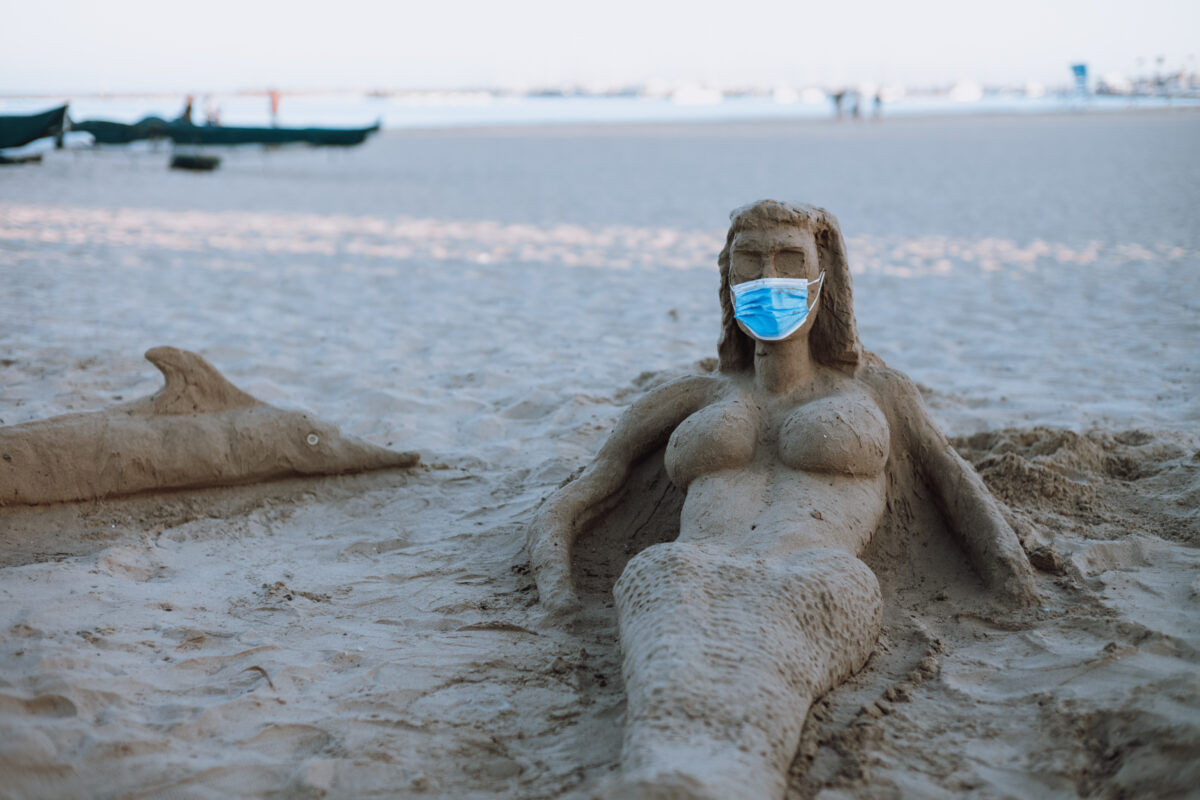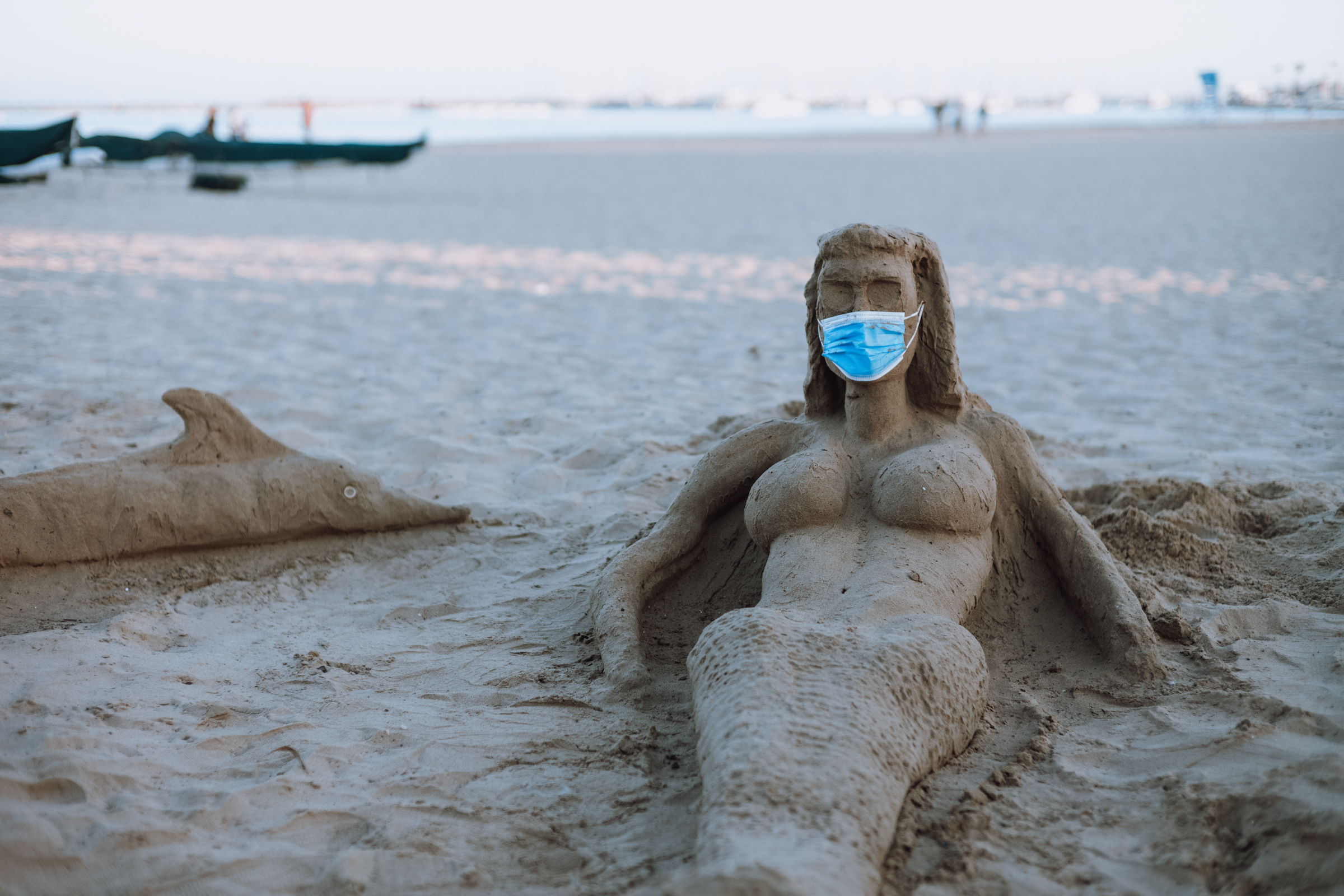
Some thoughts on COVID-19 masks and Street Photography

I’m reminded of the 1986 Space Shuttle disaster as I sit down to write this piece. Yesterday was the anniversary of the event and it’s been in the news.
I was home from school, sick with flu watching the launch with my Grandfather while sipping chicken noodle soup. When the Space Shuttle Challenger blew apart on live television neither of us spoke for a moment. I distinctly remember my grandfather saying to me, “Do you know what we just saw?” Per usual, he was being Socratic so I thought about what he was getting at. Nothing. I was too disturbed for cleverness.
“History,” he told me. “That was history. You’ll never forget where you were when that happened.”
36 years later…
I saw a question on Quora a few days ago that asked how the COVID-19 pandemic has affected street photography and the answers offered seemed to point at a shared annoyance that face masks have ruined everything.
I have some thoughts on that.
Some context.
Street Photography (done well) is largely centered around catching an unrepeatable human moment - wrapped in a package that contains a definable mood, interesting light, a strong composition, and if the photographer is demonstrating some skill, contains some unique visual interest that pulls the frame together and creates something that you might want to see published.
Street Photography (done poorly) doesn’t care about any of that and simply records what’s there, absent of any stylistic or narrative interjection from the photographer; snapshots which could just have easily been taken by a CCTV camera atop a stop light or a 360 degree spinning camera gadget mounted on the roof of a passing Google Street View capture car.
With regards to the coronavirus pandemic and its resulting face masks, I’ve seen a whole lot more of the latter kind of work than the former, though the same can be said for street photography in general as more and more new photographers flock to the genre, choosing one of the most difficult photographic disciplines as square one from which to build their skill set.
So, what’s the problem?
Street Photography is very much a human record. I personally come from the School of Humanist Photography whose philosophy focuses on the attempt to harness emotional affect and relatability into our images in contrast to a straight documentary/reportage approach to image making.
At press time the most effective way for us to tell each other apart and to run our basic sociological programming on the people we encounter is to scan faces. Faces are also a big part of what gets photographed when we hit the streets to make images. When those faces are mostly covered up and hiding behind face masks much of the data we would have incorporated into our images is lost. It's alienating. And to that point, it's like shooting on an alien landscape.
This brings up the question of how one can effectively practice street photography when most everybody is scurrying around with a blue paper face mask on their heads. The normal beats don't apply. The punchlines don't match the setup.
A frustrating shift in cultural behavior?
I’ve heard from several street photographers that they’ve sort of hung up the towel and are waiting for the world to return to normal to get back out there. Discouragement and disappointment seem to be universally felt and I can definitely relate to this myself. I’ve been frustrated several times over the past 2 years while shooting on the streets.
We all have bad days on the street and sometimes entire rolls that come back from the lab without a single “keeper” image on them. Or an entire session where nothing happened, inspiration didn’t strike, etc. I have personally found that frustrating days were more numerous during 2020 and once I accepted this updated reality I started to “see” more opportunities even within the masks. Overall 2021 was far less frustrating for me.
I personally see this masks-for-all situation to be very similar to the cultural shift that started a decade ago when suddenly everybody was lost in their smartphone during every moment of their waking life. Street photography changed then as well.
Side note: I run a Flickr group that has 4K+ members in it with more than 168,000 photos in the pool. It’s set up for moderation and we reject 90% of the images submitted. This is because 90% of the images submitted are of the latter sort I described above, and one striking similarity shared between the images that end up being rejected is that they feature a person (typically a female person) walking, or standing, with their face buried in a smartphone.
Since the beginning of the pandemic these images haven’t changed at all but now the subject is wearing a face mask while walking, or standing with their face buried in a smartphone. Progress? You tell me.
And people are still taking these images and still submitting these images as though they’re new or unique or in some way remarkable or interesting. (They’re not. Please stop.)
How has it effected my own work?
With regards to face masks as well as the introduction of the now ubiquitous smartphones that came before, the first thing I try to do is avoid subjects who are lost in their phones or who are hidden away behind masks. I mean, obviously. It's hard but worth a shot.
The obvious exception is in situations where being lost in a cell phone is about to cause some sort of problem. I've shot images of smartphone zombies colliding with one another, or walking into a street sign, tripping over a curb, almost being hit by a bus, etc. Similarly, I do look for people who are wearing a mask but maybe have it on completely wrong or upside down or with their nose sticking out. These images are at least more interesting for the accidental or intentional non-conformity their subjects display.
I also have a few images of people taking the mask thing to an extreme: gas masks, space helmets, or those ridiculous face shield things that folks liked for a few minutes.
Next, I look for scenes where many subjects are all visible and are maybe wearing all the same mask. There’s some angle there which I haven’t yet entirely cracked. Or a group of people with their masks under their chins. There’s always a social commentary available if you look for it, but I think it helps a lot if you’re already carrying such a bias with you. A personal bias makes it easier for you to spot subject matter which confirms (or refutes) your biases.
Also, the masks have taught me to be more aware of body language and to anticipate a subject’s mood even with a mask precluding the normal facial cues to which we’re all accustomed.
I look for people who look fabulous despite the mask, or even because of it. I also look for situations where maybe 10 people have masks but one person is unmasked and stands out. There’s another effective social commentary there.
Location matters.
I want to also point out that this conversation will vary from location to location. I shoot solely in Los Angeles these days (though I do still vaguely remember what it’s like to shoot in other cities around the world) and in my neck of the woods, most people are masked in indoor public spaces. Some are masked as they navigate outdoor public spaces. And more than a few will wear a face mask while walking alone on the beach. In the sunshine. No other living soul around. To each their own.
What was my point there? Oh yeah.. if you're shooting in Texas or Florida or some other place that isn't taking face masks as seriously as California this will likely not be an issue for you at all. Business as usual. But for the smartphone thing. I feel like that's an everywhere thing by now.
Where’s the opportunity?
This is where I finally explain what the hell I was getting at earlier when I mentioned the Space Shuttle Challenger disaster. Remember that bit?
By many accounts our global COVID-19 reality is shifting from pandemic to an endemic reality. Once the endemic reality is finally reached (or I should say is finally acknowledged) face masks will begin to go away again. We are living through history. The pandemic is a historic event which will have reams of entries in the annals of the 21st Century. Globally. This event is certainly not local to ourselves only.
And while the masks are here we as street photographers have an opportunity to document history. Future generations will look back at the photographic record of this time in an attempt to understand what life was like during the COVID-19 pandemic of 2020-2021.
The opportunity for us is to take the most interesting and compelling images possible that depict the growing strain on our daily lives, the myriad issues surrounding mask and vaccine compliance. Municipal and unofficial signage and textual responses that adorn local businesses, public transit, protesters’ picket signs, slogans printed on T-Shirts and on masks themselves. This is history. You’ll always remember what you did or did not do during the pandemic.
The more things change.
Street Photography is an ever-evolving art form. As the culture shifts, so does the pictographic document of that culture.
Look at the work of Vivian Maier who was active in the 1950s. Her subjects are very different to ours, in dress, style, and posture. The same can be said for the work of Garry Winogrand in the 1960s and Joel Meyerowitz in the 1970s.
I certainly wish I was doing this work in the 1960s and 1970s. Things just looked more interesting then to my eye, and to my memory.
And herein lies the challenge: what tactics might we employ to create images which accurately depict our time and place while providing all of the visual interest and story elements required to attract and hold an audience’s attention?
How do we record our history in a compelling and informative way, and do you want your own voice present in the frame?
I know I do.

The book is now available!
MOVING BEYOND SNAPSHOT.
Get the eBook, it's FREE.
Give me your email, I give you the eBook. It's a good exchange. Pinky swear.